1 of 17
Download to read offline

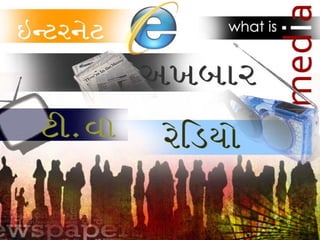
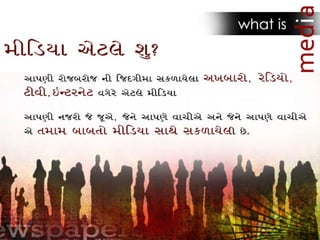

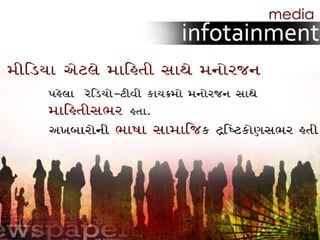
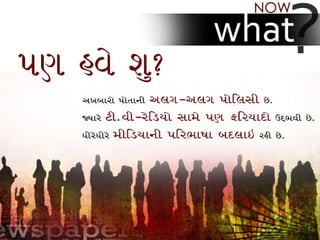


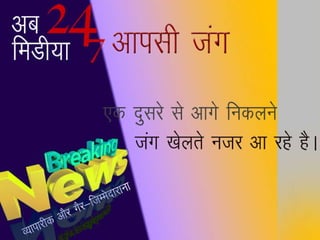


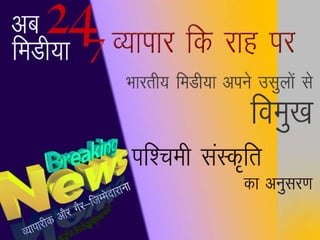
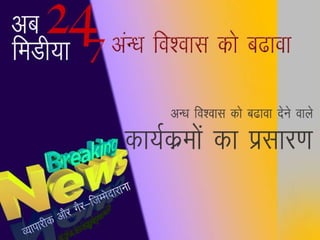
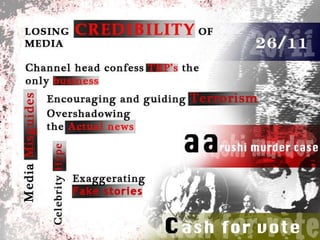
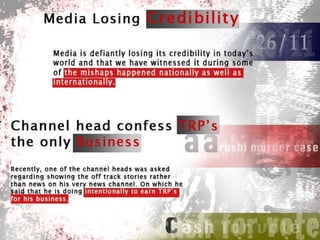


Ad
Recommended
Engaging with marginalised and diverse groups / Ymgysylltu gyda grwpiau amryw...
Engaging with marginalised and diverse groups / Ymgysylltu gyda grwpiau amryw...Participation Cymru
╠²
The document discusses the importance of engaging with marginalized and diverse groups in the context of healthcare, emphasizing the need for their meaningful involvement in decision-making. It outlines a 'ladder of involvement' to illustrate different levels of participation, from group-led initiatives to tokenism and manipulation. Additionally, it highlights the barriers to successful engagement and the necessity of learning from past experiences to develop effective strategies for inclusion.Energy & marginalised groups
Energy & marginalised groupspracticalanswerssl
╠²
The document discusses the 'Renewable Energy, Energy Efficiency and Energy Planning Training Programme' focused on marginalized groups in Digana, Kandy from September 15-17, 2011. It highlights the challenges faced by various marginalized groups and emphasizes the importance of providing sustainable energy solutions that are inclusive and equitable. The document outlines specific energy requirements and appropriate solutions, proposing capacity building and advocacy as vital components for empowerment.Comm law ppt invasion of privacy
Comm law ppt invasion of privacyJulie Price
╠²
The document discusses the legal issues surrounding privacy and the press. It outlines four areas of privacy law: intrusion upon seclusion, appropriation, public disclosure of private facts, and false light. For each, it examines factors like whether privacy was reasonably expected, if intrusion would be highly offensive, if private facts were newsworthy or obtained illegally, and if consent was given. The document provides guidance on determining liability for the press when privacy is allegedly invaded through newsgathering or publishing activities.The public sphere 2.0
The public sphere 2.0Ola L├Ėvholm
╠²
This document discusses the public sphere and how it has changed over time. It begins with an informal survey about internet and social media usage. It then provides background on Jurgen Habermas, the German philosopher who developed the concept of the public sphere. According to Habermas, the public sphere used to be a space for open discussion and consensus building, but it has since declined with the rise of mass media, public relations, advertising, and corporate influence over communication institutions. The document lists criteria for a successful public sphere and investigates who participates and what types of activities and practices are involved in the modern public sphere.Media Analysis and Criticism
Media Analysis and Criticismmznewman
╠²
This document provides an overview of key concepts for analyzing media texts, specifically moving images. It defines a text as any media product that can be analyzed for its meanings, such as films, TV shows, magazines, and websites. Textual analysis involves breaking down a text into its component parts and arrangements to understand why creators chose those elements. For moving images, this includes analyzing the narrative or non-narrative form, visual style through techniques like mise-en-sc├©ne, cinematography, and editing, as well as sound elements.Part 1 media, culture and society
Part 1 media, culture and societyJu Sung Yun
╠²
This document contains information about an Introduction to Mass Communication course, including:
- The course schedule on Mondays and Wednesdays from 11am-1pm in Room 217
- The main textbook and professor details
- Student feedback on what they want to learn and future career plans
- Homework requirements including presentations and written assignments
It also includes summaries of topics discussed in class, such as definitions of communication, culture, and mass media; their roles as storytellers and influence on shared meanings and perceptions in society.Critical Media Analysis
Critical Media Analysisamicmexico
╠²
This document provides a critical analysis of media in turbulent times and outlines several key points:
1. It examines the economic, political, social, and cultural forces that shape media and how they have transformed over time.
2. It explores the connections between innovations in media and broader societal changes, judging outcomes based on their impacts on liberty, equality, and solidarity.
3. A key point is that analysis must start with the persistence and globalization of capitalism, and how marketization has expanded the scale and scope of capitalist enterprises through privatization and ideological shifts that cement consumerism.COMS101: The Public Sphere
COMS101: The Public SphereTessa J. Houghton
╠²
1) The document discusses J├╝rgen Habermas's concept of the public sphere from his book The Structural Transformation of the Public Sphere.
2) Habermas analyzed the emergence of the bourgeois public sphere in 18th century Europe as a space for public deliberation and debate separate from the state.
3) However, critiques argue the public sphere was never truly inclusive and declined due to industrial capitalism, mass media commercialization, and state interventionism limiting critical debate.Public sphere and internet
Public sphere and internetpumascomm
╠²
1. The public sphere is the space where citizens can gather, exchange opinions on public issues, discuss, deliberate, and form public opinion.
2. The internet has allowed for a more inclusive public sphere compared to traditional mass media like television and newspapers by having lower barriers to participation.
3. Key aspects of the online public sphere enabled by the internet include greater access, interaction between discussants, and the ability to judge ideas on their merit rather than the speaker.Social movements in India
Social movements in Indiaxisr mumbai
╠²
This document discusses various methods of protest that citizens use to confront the state and demand their right to information and participation in decision making. It mentions peaceful protests like sit-ins and filing Right to Information applications, as well as more confrontational methods. It provides examples of specific protests against projects threatening tribal lands or the environment, such as the Narmada Bachao Andolan and Kudankulam nuclear project. The document notes that sustained citizen protests have helped place issues of displacement and repression on the state's agenda and led to new legislation on topics like the right to education, forests rights, and domestic violence.Lecture # 02 (media & society)
Lecture # 02 (media & society)Dynamic Research Centre & institute
╠²
The document discusses the role of media in society. It defines media as various means of communication like newspapers, radio, television, and the internet. It then outlines both the positive and negative impacts of media. The media can educate people about human rights and social issues, but it can also spread misinformation and have a bad influence on children. While media connects people globally and provides information and entertainment, excessive addiction to television and online content can be harmful. Overall, the document examines the role of mass media in society and some of its advantages and disadvantages.MEDIA AUDIENCES AND CREDIBILITY
MEDIA AUDIENCES AND CREDIBILITYNalini Prasad
╠²
This document discusses several key concepts related to audiences and media effects:
- Audiences are "imagined communities" constructed by media institutions for profit motives.
- Audiences can be passive, directly influenced by media messages, or active, interpreting messages based on their own contexts.
- New digital technologies have fragmented audiences into niche groups.
- Uses and gratifications theory sees audiences as active in using media to fulfill personal needs.
- Reception theory examines how audiences decode media texts based on their own frameworks and experiences.Role+of+media+in+society+ppt
Role+of+media+in+society+pptshowslides
╠²
Media plays an important role in society by helping spread information and bring people together globally. It has both advantages like increasing awareness and entertainment, as well as disadvantages. Media impacts society by influencing knowledge, attitudes, and behaviors. It functions as an information flow and interpreter, as well as a watchdog. The media has a duty to be truthful, fair, and objective while following ethics codes. It holds powerful strength in its ability to enact social and political change. There is a responsibility to improve the media sector for a better future.Social responsibility of mass media
Social responsibility of mass medianaeemniazi3
╠²
Mass media consists of various means of communicating information to large audiences like television, radio, newspapers, and the Internet. There are different types of mass media including print, cinema, radio, television, the Internet, and mobile phones. Mass media has important social responsibilities such as contributing to socialization, increasing awareness of issues, being fair and unbiased, supporting culture, condemning crimes, promoting education, giving voice to underrepresented groups, helping develop public opinion, assisting state development efforts, supporting democracy, and addressing public issues.print media in India
print media in Indiaika_2507
╠²
The document discusses the history and development of mass media in India, highlighting the impact of print media and the emergence of online platforms. It details the evolution of newspapers, magazines, and radio broadcasting, as well as their role in education and nation-building. Despite advancements in technology, print media remains significant for its in-depth reporting and long-lasting influence on readers.Mass Media and Society, Chapter 1: Media and Culture
Mass Media and Society, Chapter 1: Media and Cultureczavisca
╠²
This chapter discusses the relationship between media and culture. It defines culture and mass communication/media. Marshall McLuhan's theory that "the medium is the message" is introduced, which argues that media themselves shape society more than any content they carry. The chapter explores how culture and media influence each other and the roles media play in society, such as to inform, entertain, and serve as a public forum. It also discusses concepts like convergence and popular culture and how media literacy is important.RIGHT TO INFORMATION IN INDIA
RIGHT TO INFORMATION IN INDIADr. Kalpeshkumar L Gupta
╠²
This document provides an overview of the Right to Information Act in India. It discusses that RTI was recognized as a fundamental right in India in 2005 and enacted to promote transparency and accountability. It outlines key aspects of the act including definitions of information and public authorities, citizens' right to access information, exceptions, procedures for filing RTI requests, and examples of successful uses of RTI like exposing corruption. The document also briefly discusses the history and objectives of the act as well as penalties for non-compliance.Media Ownership
Media OwnershipCarla Appleby
╠²
The document discusses different types of media ownership structures including private, public service, multinational, independent, conglomerate, horizontal integration, and vertical integration. For each type of ownership, it provides one advantage and one disadvantage. It also discusses cross media divergence, synergy, and provides a prompt for the learner to describe the structure and ownership of either the film or music industry in 500 words.Role of Media ppt
Role of Media pptKishan Panchal
╠²
The document discusses the various types of media and its essential roles in today's society, such as providing information, political and social awareness, education, economic insights, and entertainment. It emphasizes media's function in connecting people globally and reducing communication gaps. The conclusion references additional resources related to the role of media.role of media in society
role of media in societyAnamika Pandey
╠²
Media plays an important role in modern society by providing information, education, entertainment, advertising, and connecting different parts of society. It has the power to change people's knowledge, behavior, attitudes, emotions, and political views. Media is considered essential like food and clothing and acts as a "mirror" reflecting society. It brings the world together as a global village and prevents isolation. While media has positive impacts like keeping people informed and acting as a watchdog, it also enables cyber crimes, sells biased news coverage, and runs false advertisements. There is a need for responsible media consumption and improvements to maximize its benefits and minimize harms.Media and Social Responsibility
Media and Social ResponsibilityMr Ambika
╠²
The document discusses the responsibilities of media as a social institution within a democratic society, emphasizing the need for truth, accuracy, and accountability. It highlights the challenges faced by media in prioritizing profitability over ethical standards and the consequences of this shift. Additionally, it suggests that media must maintain its social obligations and restore public trust to survive.Freedom of Speech & Expression
Freedom of Speech & Expressiongcundiff
╠²
Freedom of expression is defined as an indivisible human right that forms the basis of other rights and measures the effectiveness of laws. It aims to enable all people to speak freely without fear of consequences. Several international agreements protect this right, including the Universal Declaration of Human Rights. However, issues like government censorship, cultural differences, technology limitations, and hate speech endanger this right. Repressive regimes in places like Cuba, Eritrea, Burma, Iran, North Korea, and China severely limit freedom of expression through imprisonment and online censorship of journalists and bloggers. Ensuring this right is important for public awareness, development, and holding governments accountable.Role of media
Role of mediaRaveena Kaushal
╠²
The document discusses the role and impact of various types of media in India. It notes that print media like newspapers and magazines reach over 78.8 million and 41.6 million people daily/weekly respectively. There are 665 television channels and 65 million internet users. The media serves important functions like reporting news, setting agendas, and socializing people, but some outlets provide sensationalized or discouraging content. To maximize its benefits, the media should encourage positive and constructive discussions while providing factual information to build up the nation.Media Ownership Revision
Media Ownership Revisionjphibbert1979
╠²
The document discusses media ownership in the film industry. It focuses on ownership of the major Hollywood studios, known as the Big Six, which are subsidiaries of large media conglomerates. This high level of concentration of ownership allows bigger budgets but can also lead to biases and synergy between related products. The document also examines ownership in the UK film industry, where American films dominate the box office, and how independent British productions like "This is England" reflect aspects of British culture.Role of Media
Role of MediaSLCJ Srilanka College of Journalism
╠²
The document discusses the role and importance of media in society. It outlines both the advantages and disadvantages of media. Media is seen as an integral part of modern life that helps spread awareness and bring people together through communication. However, media also has the potential for negative impacts. The document stresses that media has a duty to be truthful, fair, and represent the public interest while also highlighting its ability to enact social change.Role and impact of media on society final ppt............
Role and impact of media on society final ppt............Aaryendr
╠²
The document discusses the role and impact of media on society. It notes that print media includes newspapers and magazines, audio media includes radio, and audio-video media includes television and the internet. It provides statistics on newspaper and magazine readership as well as the number of television channels and active internet users in India. The document advocates for media to be informative, positive, creative, motivating and entertaining. However, it acknowledges that some media can be negative, sensationalized, boring, or crime-encouraging. It calls for an ideal media that is free from pressure, fact-finding, and nation-building.Influence of media on society ppt
Influence of media on society pptsharmi88
╠²
The document discusses the influence of media on society. It outlines both positive and negative effects. Positively, media educates people and spreads information quickly. However, it can also encourage unhealthy behaviors in children through advertising and depictions. The document suggests reducing screen time, censoring violent content, building strong family relationships, and praising positive behaviors to counter the negative influences of media on children.Social Media Marketing
Social Media MarketingKalahub
╠²
Social media marketing involves creating engaging content on platforms like Facebook, Twitter, and YouTube to spread brand awareness and encourage sharing. The objective is to connect with and engage an online community, rather than directly sell to users. Statistics show that Facebook has over 500 million active users and fans are worth $3.60 per year in marketing value on average. Twitter sees over 70 million tweets sent daily and is useful for one-on-one conversations and customer service. YouTube uploads 24 hours of new video every minute and can help content go viral. Blogs and LinkedIn provide industry information and visibility for professionals. The key is using various social networks to listen, share useful information, and drive traffic back to own sites through links and subscriptions.Small and medium scale enterprise
Small and medium scale enterpriseKalahub
╠²
The document discusses the definitions and classifications of Micro, Small and Medium Enterprises (MSMEs) in India, including their economic contributions and challenges faced due to lack of support. It compares the MSME sectors in India, Europe, and Indonesia, highlighting the policies and structures that promote their growth. The conclusion recommends strategies for India to enhance its MSME sector, such as improving management practices and increasing government support.Petrochemical hub of india gujarat
Petrochemical hub of india gujaratKalahub
╠²
Gujarat is positioned as India's petrochemical hub, producing 13,048 ('000 tones) of petrochemical products and contributing 62% of the country's total output, largely driven by companies like Reliance Industries. The state's favorable manufacturing conditions, government support, and robust infrastructure have attracted significant investments, notably a proposed INR 42,473 crore for various projects in the sector. Additionally, the growth rate of the Indian petrochemical industry, which outpaces GDP growth, promises substantial employment and market opportunities.More Related Content
Viewers also liked (19)
Public sphere and internet
Public sphere and internetpumascomm
╠²
1. The public sphere is the space where citizens can gather, exchange opinions on public issues, discuss, deliberate, and form public opinion.
2. The internet has allowed for a more inclusive public sphere compared to traditional mass media like television and newspapers by having lower barriers to participation.
3. Key aspects of the online public sphere enabled by the internet include greater access, interaction between discussants, and the ability to judge ideas on their merit rather than the speaker.Social movements in India
Social movements in Indiaxisr mumbai
╠²
This document discusses various methods of protest that citizens use to confront the state and demand their right to information and participation in decision making. It mentions peaceful protests like sit-ins and filing Right to Information applications, as well as more confrontational methods. It provides examples of specific protests against projects threatening tribal lands or the environment, such as the Narmada Bachao Andolan and Kudankulam nuclear project. The document notes that sustained citizen protests have helped place issues of displacement and repression on the state's agenda and led to new legislation on topics like the right to education, forests rights, and domestic violence.Lecture # 02 (media & society)
Lecture # 02 (media & society)Dynamic Research Centre & institute
╠²
The document discusses the role of media in society. It defines media as various means of communication like newspapers, radio, television, and the internet. It then outlines both the positive and negative impacts of media. The media can educate people about human rights and social issues, but it can also spread misinformation and have a bad influence on children. While media connects people globally and provides information and entertainment, excessive addiction to television and online content can be harmful. Overall, the document examines the role of mass media in society and some of its advantages and disadvantages.MEDIA AUDIENCES AND CREDIBILITY
MEDIA AUDIENCES AND CREDIBILITYNalini Prasad
╠²
This document discusses several key concepts related to audiences and media effects:
- Audiences are "imagined communities" constructed by media institutions for profit motives.
- Audiences can be passive, directly influenced by media messages, or active, interpreting messages based on their own contexts.
- New digital technologies have fragmented audiences into niche groups.
- Uses and gratifications theory sees audiences as active in using media to fulfill personal needs.
- Reception theory examines how audiences decode media texts based on their own frameworks and experiences.Role+of+media+in+society+ppt
Role+of+media+in+society+pptshowslides
╠²
Media plays an important role in society by helping spread information and bring people together globally. It has both advantages like increasing awareness and entertainment, as well as disadvantages. Media impacts society by influencing knowledge, attitudes, and behaviors. It functions as an information flow and interpreter, as well as a watchdog. The media has a duty to be truthful, fair, and objective while following ethics codes. It holds powerful strength in its ability to enact social and political change. There is a responsibility to improve the media sector for a better future.Social responsibility of mass media
Social responsibility of mass medianaeemniazi3
╠²
Mass media consists of various means of communicating information to large audiences like television, radio, newspapers, and the Internet. There are different types of mass media including print, cinema, radio, television, the Internet, and mobile phones. Mass media has important social responsibilities such as contributing to socialization, increasing awareness of issues, being fair and unbiased, supporting culture, condemning crimes, promoting education, giving voice to underrepresented groups, helping develop public opinion, assisting state development efforts, supporting democracy, and addressing public issues.print media in India
print media in Indiaika_2507
╠²
The document discusses the history and development of mass media in India, highlighting the impact of print media and the emergence of online platforms. It details the evolution of newspapers, magazines, and radio broadcasting, as well as their role in education and nation-building. Despite advancements in technology, print media remains significant for its in-depth reporting and long-lasting influence on readers.Mass Media and Society, Chapter 1: Media and Culture
Mass Media and Society, Chapter 1: Media and Cultureczavisca
╠²
This chapter discusses the relationship between media and culture. It defines culture and mass communication/media. Marshall McLuhan's theory that "the medium is the message" is introduced, which argues that media themselves shape society more than any content they carry. The chapter explores how culture and media influence each other and the roles media play in society, such as to inform, entertain, and serve as a public forum. It also discusses concepts like convergence and popular culture and how media literacy is important.RIGHT TO INFORMATION IN INDIA
RIGHT TO INFORMATION IN INDIADr. Kalpeshkumar L Gupta
╠²
This document provides an overview of the Right to Information Act in India. It discusses that RTI was recognized as a fundamental right in India in 2005 and enacted to promote transparency and accountability. It outlines key aspects of the act including definitions of information and public authorities, citizens' right to access information, exceptions, procedures for filing RTI requests, and examples of successful uses of RTI like exposing corruption. The document also briefly discusses the history and objectives of the act as well as penalties for non-compliance.Media Ownership
Media OwnershipCarla Appleby
╠²
The document discusses different types of media ownership structures including private, public service, multinational, independent, conglomerate, horizontal integration, and vertical integration. For each type of ownership, it provides one advantage and one disadvantage. It also discusses cross media divergence, synergy, and provides a prompt for the learner to describe the structure and ownership of either the film or music industry in 500 words.Role of Media ppt
Role of Media pptKishan Panchal
╠²
The document discusses the various types of media and its essential roles in today's society, such as providing information, political and social awareness, education, economic insights, and entertainment. It emphasizes media's function in connecting people globally and reducing communication gaps. The conclusion references additional resources related to the role of media.role of media in society
role of media in societyAnamika Pandey
╠²
Media plays an important role in modern society by providing information, education, entertainment, advertising, and connecting different parts of society. It has the power to change people's knowledge, behavior, attitudes, emotions, and political views. Media is considered essential like food and clothing and acts as a "mirror" reflecting society. It brings the world together as a global village and prevents isolation. While media has positive impacts like keeping people informed and acting as a watchdog, it also enables cyber crimes, sells biased news coverage, and runs false advertisements. There is a need for responsible media consumption and improvements to maximize its benefits and minimize harms.Media and Social Responsibility
Media and Social ResponsibilityMr Ambika
╠²
The document discusses the responsibilities of media as a social institution within a democratic society, emphasizing the need for truth, accuracy, and accountability. It highlights the challenges faced by media in prioritizing profitability over ethical standards and the consequences of this shift. Additionally, it suggests that media must maintain its social obligations and restore public trust to survive.Freedom of Speech & Expression
Freedom of Speech & Expressiongcundiff
╠²
Freedom of expression is defined as an indivisible human right that forms the basis of other rights and measures the effectiveness of laws. It aims to enable all people to speak freely without fear of consequences. Several international agreements protect this right, including the Universal Declaration of Human Rights. However, issues like government censorship, cultural differences, technology limitations, and hate speech endanger this right. Repressive regimes in places like Cuba, Eritrea, Burma, Iran, North Korea, and China severely limit freedom of expression through imprisonment and online censorship of journalists and bloggers. Ensuring this right is important for public awareness, development, and holding governments accountable.Role of media
Role of mediaRaveena Kaushal
╠²
The document discusses the role and impact of various types of media in India. It notes that print media like newspapers and magazines reach over 78.8 million and 41.6 million people daily/weekly respectively. There are 665 television channels and 65 million internet users. The media serves important functions like reporting news, setting agendas, and socializing people, but some outlets provide sensationalized or discouraging content. To maximize its benefits, the media should encourage positive and constructive discussions while providing factual information to build up the nation.Media Ownership Revision
Media Ownership Revisionjphibbert1979
╠²
The document discusses media ownership in the film industry. It focuses on ownership of the major Hollywood studios, known as the Big Six, which are subsidiaries of large media conglomerates. This high level of concentration of ownership allows bigger budgets but can also lead to biases and synergy between related products. The document also examines ownership in the UK film industry, where American films dominate the box office, and how independent British productions like "This is England" reflect aspects of British culture.Role of Media
Role of MediaSLCJ Srilanka College of Journalism
╠²
The document discusses the role and importance of media in society. It outlines both the advantages and disadvantages of media. Media is seen as an integral part of modern life that helps spread awareness and bring people together through communication. However, media also has the potential for negative impacts. The document stresses that media has a duty to be truthful, fair, and represent the public interest while also highlighting its ability to enact social change.Role and impact of media on society final ppt............
Role and impact of media on society final ppt............Aaryendr
╠²
The document discusses the role and impact of media on society. It notes that print media includes newspapers and magazines, audio media includes radio, and audio-video media includes television and the internet. It provides statistics on newspaper and magazine readership as well as the number of television channels and active internet users in India. The document advocates for media to be informative, positive, creative, motivating and entertaining. However, it acknowledges that some media can be negative, sensationalized, boring, or crime-encouraging. It calls for an ideal media that is free from pressure, fact-finding, and nation-building.Influence of media on society ppt
Influence of media on society pptsharmi88
╠²
The document discusses the influence of media on society. It outlines both positive and negative effects. Positively, media educates people and spreads information quickly. However, it can also encourage unhealthy behaviors in children through advertising and depictions. The document suggests reducing screen time, censoring violent content, building strong family relationships, and praising positive behaviors to counter the negative influences of media on children.More from Kalahub (20)
Social Media Marketing
Social Media MarketingKalahub
╠²
Social media marketing involves creating engaging content on platforms like Facebook, Twitter, and YouTube to spread brand awareness and encourage sharing. The objective is to connect with and engage an online community, rather than directly sell to users. Statistics show that Facebook has over 500 million active users and fans are worth $3.60 per year in marketing value on average. Twitter sees over 70 million tweets sent daily and is useful for one-on-one conversations and customer service. YouTube uploads 24 hours of new video every minute and can help content go viral. Blogs and LinkedIn provide industry information and visibility for professionals. The key is using various social networks to listen, share useful information, and drive traffic back to own sites through links and subscriptions.Small and medium scale enterprise
Small and medium scale enterpriseKalahub
╠²
The document discusses the definitions and classifications of Micro, Small and Medium Enterprises (MSMEs) in India, including their economic contributions and challenges faced due to lack of support. It compares the MSME sectors in India, Europe, and Indonesia, highlighting the policies and structures that promote their growth. The conclusion recommends strategies for India to enhance its MSME sector, such as improving management practices and increasing government support.Petrochemical hub of india gujarat
Petrochemical hub of india gujaratKalahub
╠²
Gujarat is positioned as India's petrochemical hub, producing 13,048 ('000 tones) of petrochemical products and contributing 62% of the country's total output, largely driven by companies like Reliance Industries. The state's favorable manufacturing conditions, government support, and robust infrastructure have attracted significant investments, notably a proposed INR 42,473 crore for various projects in the sector. Additionally, the growth rate of the Indian petrochemical industry, which outpaces GDP growth, promises substantial employment and market opportunities.Best clik forever
Best clik foreverKalahub
╠²
The document appears to be a collection of photo captions or comments posted by an individual named Kamal Dave. Each caption is preceded by the phrase "Do not use for Personal and Professional Use @ C (Kamal Dave)". The captions reference various locations and subjects around Gujarat including flowers, rivers, dams, and Gandhi.Pr portfolio
Pr portfolioKalahub
╠²
Constructing a public relations portfolio
- A PR portfolio demonstrates your expertise and skills to potential employers through samples of your work like writing samples, event planning materials, and results of PR campaigns.
- The portfolio should be organized clearly and highlight your strongest work through a variety of media like print, online, and broadcast samples that show your skills in areas like writing, media relations, and strategic planning.
- Employers will only briefly glance at a portfolio, so materials should be clean, well-designed, and highlight the most relevant experience for the potential position.ETV Programme Schedule...
ETV Programme Schedule...Kalahub
╠²
The document discusses the programming schedule and hierarchies for different departments at ETV. It outlines the scheduling for different time periods from 6am to midnight, designating prime time as 7pm to 11pm. It also provides information on the hierarchies for the editorial, entertainment, economics, and news production departments at ETV. Key roles in each department are identified.Sanjeevani kit
Sanjeevani kitKalahub
╠²
Kamal Dave submitted a diploma project to the Center for Environment Education at the National Institute of Mass communication and Journalism. The project was on creating a Sanjeevani Corporate Kit and focused on corporate communication, public relations, and advertisement. The presentation content covered the Sanjeevani Corporate Kit.Presentation2
Presentation2Kalahub
╠²
The Right of Children to free and Compulsory Education Act 2009 provides free and compulsory education for all children between 6-14 years old as a fundamental right in India. The central government will bear 65% of the costs while states cover the remaining 35% to implement this law. Key aspects include free education for all Indian children 6-14, no student can be held back or required to pass an exam before completing elementary education, a certificate will be awarded upon completing class 8, and it focuses on improving teacher quality, student-teacher ratios and school infrastructure.Sanjeevani kit
Sanjeevani kitKalahub
╠²
Kamal Dave submitted a diploma project to the Center for Environment Education at the National Institute of Mass communication and Journalism. The project was on creating a Sanjeevani Corporate Kit and focused on corporate communication, public relations, and advertisement. The presentation content covered the Sanjeevani Corporate Kit.Gujtorism
GujtorismKalahub
╠²
The document discusses various factors to consider for an advertising campaign including geographic coverage, target market, media mix, scheduling, budget, and creative aspects. It also provides rates for bus panel advertisements and notes the minimum jingle length and how additional lengths are calculated. The total proposed cost for the campaign is 3 crores with unspecified conditions.Ad
